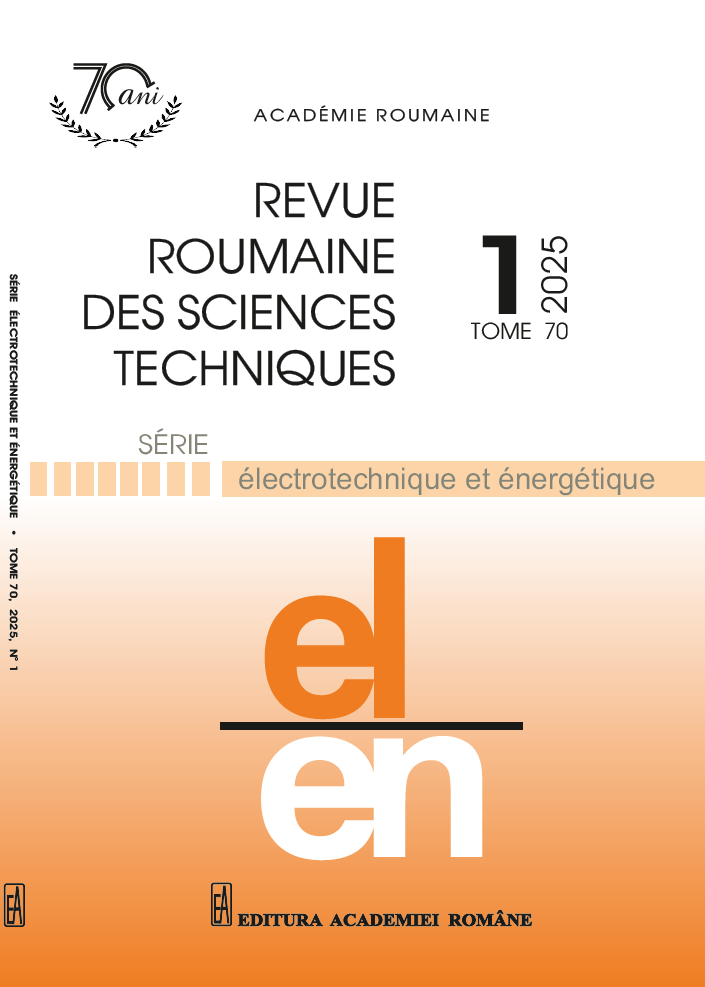CONCEPTION ET MISE EN ŒUVRE D'UN DISPOSITIF DE STIMULATION ÉLECTRIQUE FONCTIONNEL ET RENTABLE POUR LA RÉÉDUCATION DU PIED TOMBANT
DOI :
https://doi.org/10.59277/RRST-EE.2025.1.26Mots-clés :
Stimulation électrique fonctionnelle, Pied tombant, Orthèses cheville-pied, Arduino NanoRésumé
La stimulation électrique fonctionnelle (SEF) est une méthode efficace pour corriger le pied tombant et faciliter l'élévation de l'avant-pied pendant la marche. En tant que sous-ensemble de la stimulation électrique neuromusculaire (SENM), la SEF améliore les mouvements fonctionnels en stimulant les muscles afin de compenser les déficits neurologiques. Les récentes avancées technologiques visent à développer des dispositifs plus compacts, plus efficaces et plus personnalisables, adaptés aux besoins de chaque patient et améliorant ainsi les résultats de la rééducation. Cette étude a mis au point un dispositif hybride combinant stimulation électrique et orthèses cheville-pied (OAP) pour améliorer la rééducation de la marche. Une unité de stimulation personnalisée, aux paramètres ajustables, a été créée pour délivrer des impulsions électriques. Un nano-microcontrôleur Arduino a été programmé pour traiter les données d'un capteur MPU6050, qui mesure les accélérations et les angles de la cheville (flexion plantaire et flexion dorsale). Cette configuration permet un contrôle précis des schémas de stimulation, offrant une solution économique et adaptable aux patients souffrant de pied tombant, en phase avec les efforts scientifiques actuels visant à améliorer les technologies de rééducation de la marche.
Références
(1) R.M. Baerov, A.M. Morega, M. Morega, Analysis of magnetotherapy effects for post-traumatic recovery of limb fractures, Rev. Roum. Sci. Techn. – Électrotechn. et Énerg., 65, 1-2, pp. 145–150 (2020).
(2) T. Aout, M. Begon, B. Jegou, N. Peyrot, T. Caderby, Effects of functional electrical stimulation on gait characteristics in healthy individuals: A systematic review, Sensors, 23, pp. 8684 (2023).
(3) L. Hodgins, C.T. Freeman, A hybrid orthosis combining functional electrical stimulation and soft robotics for improved assistance of drop-foot, Med. Eng. Phys., 115, 1, pp. 103979 (2023).
(4) C. Singleton, H. Jones, L. Maycock, Functional electrical stimulation (FES) for children and young people with cerebral palsy, Paediatr. Child Heal. (United Kingdom), 29, 11, pp. 498–502 92019).
(5) D. Scherb, P. Steck, H. Völkl, S. Wartzack, J. Miehling, A new method for passive ankle foot orthosis design – integration of musculoskeletal and finite element simulation, Proceedings of the Design Society, 34, 3, pp. 333-342, 2023.
(6) K.A. Shorter, G.F. Kogler, E. Loth, W.K. Durfee, E.T. Hsiao-Wecksler, A portable powered ankle-foot orthosis for rehabilitation, J. Rehabil. Res. Dev., 48, 4, pp. 459–472 (2011).
(7) ***In-Depth: Interface MPU6050 Accelerometer & Gyroscope Sensor with Arduino. https://lastminuteengineers.com/mpu6050-accel-gyro-arduino-tutorial/.
(8) S. Qu, R. Li, W. Yao, C. Ma, Z. Guo, structure design, kinematics analysis, and effect evaluation of a novel ankle rehabilitation robot, Appl. Sci., 13, 10, pp. 6109 (2023).
(9) T. Seel, C. Werner, T. Schauer, The adaptive drop foot stimulator – Multivariable learning control of foot pitch and roll motion in paretic gait, Med. Eng. Phys., 38, 11, pp. 1205–1213 (2016).
Téléchargements
Publiée
Numéro
Rubrique
Licence
(c) Copyright REVUE ROUMAINE DES SCIENCES TECHNIQUES — SÉRIE ÉLECTROTECHNIQUE ET ÉNERGÉTIQUE 2025

Ce travail est disponible sous licence Creative Commons Attribution - Pas d'Utilisation Commerciale - Pas de Modification 4.0 International.


